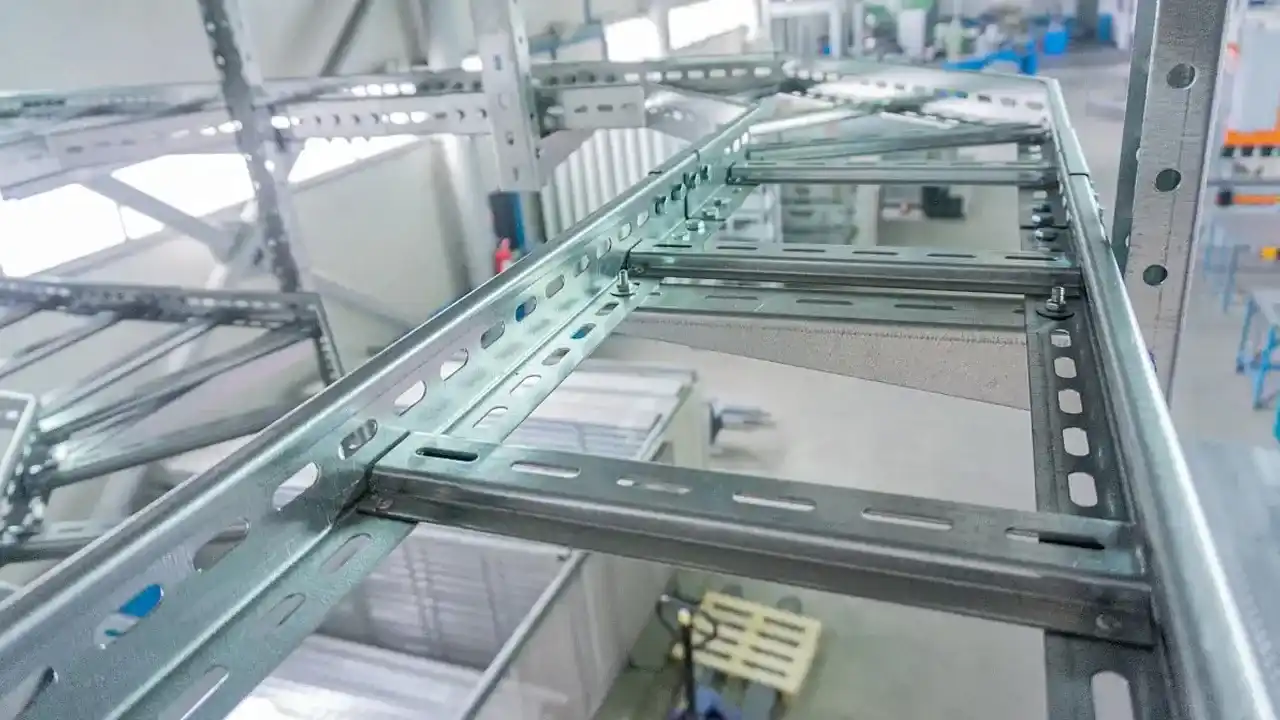12 Jun 2024

Cable trays play a vital role in electrical and communication installations by offering a secure and organized method for routing cables throughout a building or facility. Accurately calculating the appropriate load capacity of these trays is crucial to guarantee safe and dependable operations while adhering to relevant codes and regulations. Failure to determine the correct load capacity can lead to potential safety hazards, equipment damage, or non-compliance issues. Therefore, it is essential to understand the factors involved in load calculations of cable trays and follow the proper procedures to ensure the selected tray can safely support the intended cable load. In this blog, we'll explore the factors involved in cable tray load calculations and guide how to determine the right capacity. Cable trays load calculations involve determining the maximum weight or load that a cable tray can safely support without compromising its structural integrity or violating safety regulations. Several factors come into play when calculating cable tray loads, including: The weight of the cables to be installed in the cable tray is a critical factor in determining the load capacity. Cable weight is typically expressed in pounds per linear foot (lbs/ft) or kilograms per meter (kg/m). The cable weight depends on various factors, such as the cable type (e.g., power, control, communication), conductor size, insulation material, and shielding. To calculate the total cable weight, you'll need to know the following: Number of cables to be installed in the tray Weight of each cable type (provided by the manufacturer) The total cable weight is calculated by multiplying the weight of each cable type by the number of cables, and then summing the individual cable weights. The tray span is the distance between the support points or hangers that hold the cable tray in place. Longer tray spans generally require a higher load capacity to prevent excessive deflection or sagging. The tray span is typically determined by the building's structural design and the installation requirements. Safety factors are applied to cable tray load calculations to account for potential overloads, dynamic loads (such as seismic or wind loads), and other unforeseen circumstances. These factors provide an additional margin of safety to ensure the cable tray can withstand loads beyond the calculated design load. Typical safety factors range from 1.5 to 2.0, depending on the application and local codes or standards. A higher safety factor may be required in areas with increased risk or stringent regulations. To calculate the cable tray load capacity, follow these steps:Understanding Cable Tray Load Calculations
Cable Weight
Tray Span
Safety Factors
Calculating Cable Tray Load Capacity
Determine the cable weight
When calculating cable tray load capacity, it's essential to consider future expansion plans and potential cable additions. Leaving some spare capacity can accommodate future growth and modifications without the need for costly tray replacements.
Most codes and standards specify a maximum cable fill ratio, which limits the amount of cables that can be installed in a tray based on the tray's cross-sectional area. Ensure that the proposed cable installation complies with the applicable cable fill ratio requirements.
Environmental conditions, such as temperature, humidity, and corrosive atmospheres, can impact cable tray performance and load capacity. Consult the manufacturer's guidelines and local codes for any necessary adjustments or considerations.
In certain applications, such as industrial facilities or seismic zones, vibration and dynamic loads may need to be taken into account when calculating cable tray load capacity.
Determining the appropriate cable tray load capacity is essential for ensuring the safe and reliable operation of electrical and communication systems. By considering factors such as cable weight, tray span, and safety factors, and following the calculation steps outlined in this blog, you can accurately determine the required load capacity for your cable tray installation. When sourcing cable trays, it's advisable to consult reputable Cable Trays suppliers and Cable Trays manufacturers in UAE, as they can provide guidance and high-quality products tailored to local requirements. Remember to consult local codes, standards, and manufacturer's guidelines for specific requirements and recommendations to ensure a compliant and robust cable tray system.
Determining the right cable tray load capacity is crucial for safe operations. Follow the steps in this blog, considering cable weight, tray span, and safety factors. For an overview before calculations, refer to our blog "Understanding Cable Trays Types, Materials and Applications".